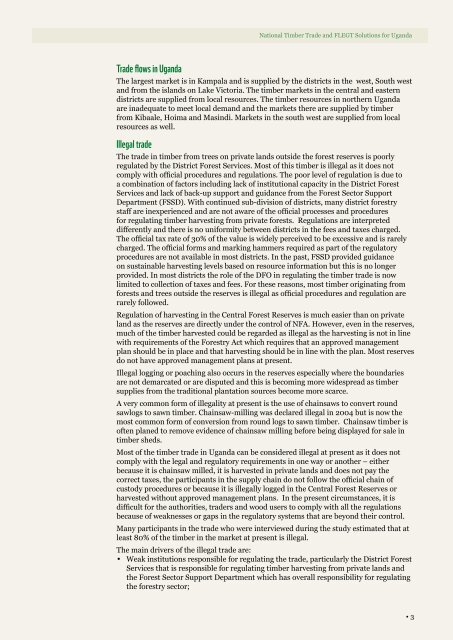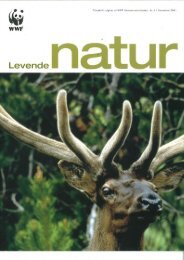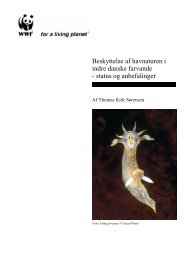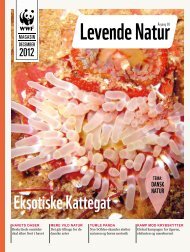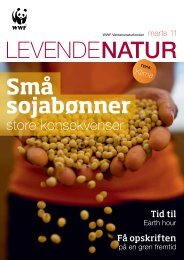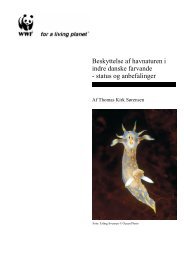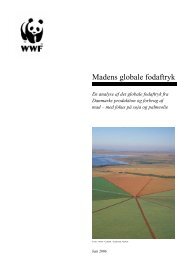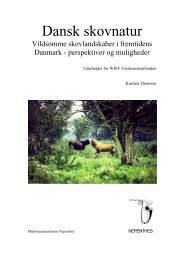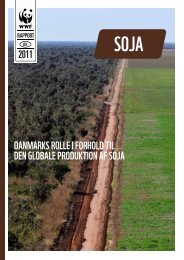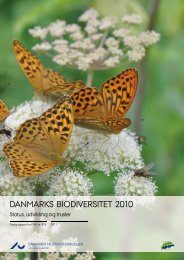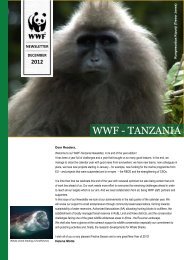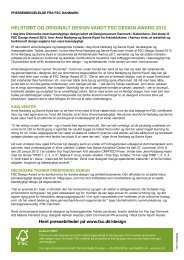NatioNal timber trade aNd FleGt SolutioNS For uGaNda - WWF
NatioNal timber trade aNd FleGt SolutioNS For uGaNda - WWF
NatioNal timber trade aNd FleGt SolutioNS For uGaNda - WWF
Create successful ePaper yourself
Turn your PDF publications into a flip-book with our unique Google optimized e-Paper software.
National Timber Trade and FLEGT Solutions for Uganda<br />
<strong>trade</strong> flows in uganda<br />
The largest market is in Kampala and is supplied by the districts in the west, South west<br />
and from the islands on Lake Victoria. The <strong>timber</strong> markets in the central and eastern<br />
districts are supplied from local resources. The <strong>timber</strong> resources in northern Uganda<br />
are inadequate to meet local demand and the markets there are supplied by <strong>timber</strong><br />
from Kibaale, Hoima and Masindi. Markets in the south west are supplied from local<br />
resources as well.<br />
illegal <strong>trade</strong><br />
The <strong>trade</strong> in <strong>timber</strong> from trees on private lands outside the forest reserves is poorly<br />
regulated by the District <strong>For</strong>est Services. Most of this <strong>timber</strong> is illegal as it does not<br />
comply with official procedures and regulations. The poor level of regulation is due to<br />
a combination of factors including lack of institutional capacity in the District <strong>For</strong>est<br />
Services and lack of back-up support and guidance from the <strong>For</strong>est Sector Support<br />
Department (FSSD). With continued sub-division of districts, many district forestry<br />
staff are inexperienced and are not aware of the official processes and procedures<br />
for regulating <strong>timber</strong> harvesting from private forests. Regulations are interpreted<br />
differently and there is no uniformity between districts in the fees and taxes charged.<br />
The official tax rate of 30% of the value is widely perceived to be excessive and is rarely<br />
charged. The official forms and marking hammers required as part of the regulatory<br />
procedures are not available in most districts. In the past, FSSD provided guidance<br />
on sustainable harvesting levels based on resource information but this is no longer<br />
provided. In most districts the role of the DFO in regulating the <strong>timber</strong> <strong>trade</strong> is now<br />
limited to collection of taxes and fees. <strong>For</strong> these reasons, most <strong>timber</strong> originating from<br />
forests and trees outside the reserves is illegal as official procedures and regulation are<br />
rarely followed.<br />
Regulation of harvesting in the Central <strong>For</strong>est Reserves is much easier than on private<br />
land as the reserves are directly under the control of NFA. However, even in the reserves,<br />
much of the <strong>timber</strong> harvested could be regarded as illegal as the harvesting is not in line<br />
with requirements of the <strong>For</strong>estry Act which requires that an approved management<br />
plan should be in place and that harvesting should be in line with the plan. Most reserves<br />
do not have approved management plans at present.<br />
Illegal logging or poaching also occurs in the reserves especially where the boundaries<br />
are not demarcated or are disputed and this is becoming more widespread as <strong>timber</strong><br />
supplies from the traditional plantation sources become more scarce.<br />
A very common form of illegality at present is the use of chainsaws to convert round<br />
sawlogs to sawn <strong>timber</strong>. Chainsaw-milling was declared illegal in 2004 but is now the<br />
most common form of conversion from round logs to sawn <strong>timber</strong>. Chainsaw <strong>timber</strong> is<br />
often planed to remove evidence of chainsaw milling before being displayed for sale in<br />
<strong>timber</strong> sheds.<br />
Most of the <strong>timber</strong> <strong>trade</strong> in Uganda can be considered illegal at present as it does not<br />
comply with the legal and regulatory requirements in one way or another – either<br />
because it is chainsaw milled, it is harvested in private lands and does not pay the<br />
correct taxes, the participants in the supply chain do not follow the official chain of<br />
custody procedures or because it is illegally logged in the Central <strong>For</strong>est Reserves or<br />
harvested without approved management plans. In the present circumstances, it is<br />
difficult for the authorities, <strong>trade</strong>rs and wood users to comply with all the regulations<br />
because of weaknesses or gaps in the regulatory systems that are beyond their control.<br />
Many participants in the <strong>trade</strong> who were interviewed during the study estimated that at<br />
least 80% of the <strong>timber</strong> in the market at present is illegal.<br />
The main drivers of the illegal <strong>trade</strong> are:<br />
• Weak institutions responsible for regulating the <strong>trade</strong>, particularly the District <strong>For</strong>est<br />
Services that is responsible for regulating <strong>timber</strong> harvesting from private lands and<br />
the <strong>For</strong>est Sector Support Department which has overall responsibility for regulating<br />
the forestry sector;<br />
• 3


